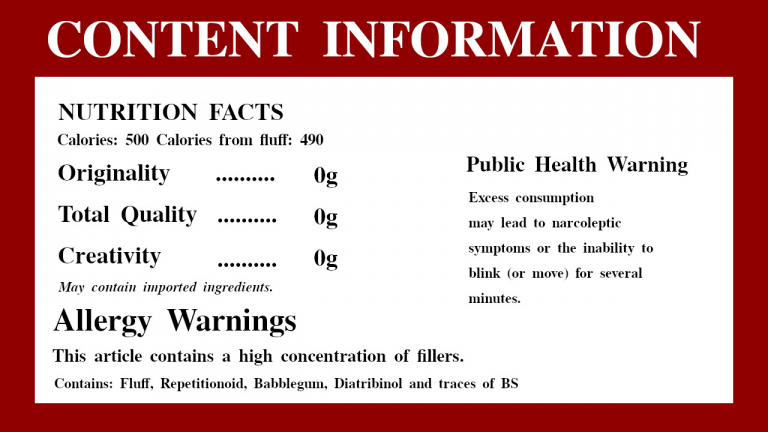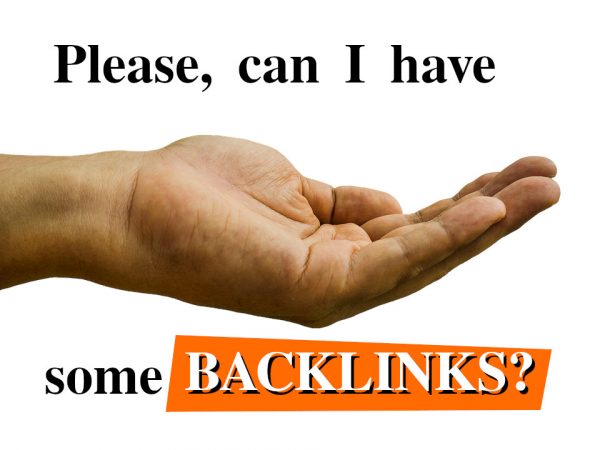
For a long time time bloggers and website owners would turn to article submission websites to help boost their search engine rankings. By adding articles to these websites, other bloggers were able to add that content to their own websites. This popular resource served a lot of people pretty well – for a while. However, that was “back in the day”, things are different now.
It used to be enough to pump out some content and no matter who wrote it, even if the quality wasn’t all that great and with a bit of on-page SEO, it would rank. Some people made a healthy profit just gathering up content, re-branding it and pumping it out on their blog. All that was needed to rank were a few backlinks. Then, they just had to slap on a few ads, rinse and repeat for a few different niches and voila: some great little cash cows were created.
Content is Still King, but..

Search engine algorithms (and AI in general) have come a long way. Gone are the days of filling websites with content just to attract traffic from the various keywords. If an article isn’t already receiving attention via social media, other blogs and other methods of naturally sharing links, you can pretty much forget about that article being ranked. Put simply: search engines know if people like your article or not.
The days are also gone where you could submit your writings to article submission websites, hoping that people would use your content on their websites so you can get backlinks. There’s an old saying online, from the very beginnings of the SEO era: “Content is King”; however, while it is still true more than ever, the saying only still holds true for QUALITY content. But how do you write quality content? How do you write articles that people will naturally want to share?
Let’s Discuss the Best way to Write Quality Articles the People will Share
- How to Rank Articles
- Quality! Not Quantity
- How to Add Value When Writing Articles
- Here are Some Practical Article Writing Tips
- How to Get Readers to Read Your Articles
- Where to Post Articles Besides Article Submission Sites?
- Good Reviews are GOLD for Authority
How to Rank Articles
If you want your articles to rank these days, you have to put in a bit more effort into them than we used to be able to get away with. First and foremost, if your website is full of articles and none of those articles receive any visits, you can forget about that article ranking; particularly if no other websites are linking to that article.
Research your topic, write professorial articles that naturally receive backlinks. Put in hard work and make your content exclusive. Write for readers, not for search engines.
In the early days of SEO, websites were often built to cover as many single keywords or key-phrases on a topic (or niche) as possible, in an effort to attract rankings. However, the rankings of most of the websites that capitalised on this technique began to fall away when search engines adjusted their algorithms to esteem authority as a greater metric.
A great way to think of content writing these days, is like publishing a book. Books are often revised and re-released with the latest info. They are meticulously researched and often go through countless revisions and checks before finally published. It’s a very good habit to constantly go over your articles and other website content to make sure that the information being shared is still up to date and relevant.
Another great way to look at things is that search engines pay a lot more attention to how people react to your website, rather than on-site SEO techniques, or how many article submission websites are linking to it.
Write for the Times
In keeping with current best practices, you’re far better off creating a dozen or so ultra-informative articles that people will want to naturally share and link to, rather than just trying to pump out hundreds or even thousands of articles, hoping that you’ll get traffic by the sheer number of keywords present on your website. Search engines will penalise this tactic now. Quite frankly, adding articles for the mere sake of having more articles will do your website more harm than good.
Revise Your Articles
If you don’t have the time to keep tabs on what articles you have running, whether they’re being shared or not – or weather they are up to date or not, you probably have too much fluff and too many pointless articles. Going further, if you look at your statistics and see that an article is not receiving any visitors and it’s not being shared, you need to consider removing the article or otherwise revise and re-release a new and improved version of it.
Treat your website or blog like a book that’s being published to high standards and search engines will take notice. If you don’t know (or care) what’s on your website, why should any one else? And why would search engines?
Quality! Not Quantity

If you create articles that are written to genuinely help people or otherwise inform them in a thorough way, this is fantastic for rankings, because readers will naturally want to share or link to your article. When you write an article, just ask yourself: “If I came across this article online, would I want to share it?”. If the answer is no, go back to the article and improve it until you feel confident that you’ve added value.
How to Add Value When Writing Articles
The last thing you want to do when writing an article that you actually want people to read is just to try to drum up some text, just to reach some kind of arbitrarily conceived word count. You need to get into the mind of the reader. Don’t write for search engines, write for people. There are so many articles online that are obviously written to “rank”; however, when you read the article, you find that it babbles on and on before getting to the point, because the writer is aiming to manipulate search engines, instead of just providing some decent content that people will actually find useful. People don’t want anecdotes and stories.

Tips to Add value
- Research your topic(s) thoroughly, taking specific notice of recent trends.
- Keep your finger on the pulse of topics by visiting forums and social media pages and even participating in discussion.
- Don’t add stories and anecdotes to articles to make them more lengthy, causing people to have to read through paragraphs of nonsense to find the point of the article. It’s a tactic is getting really annoying on the Internet and it doesn’t work. People just leave the page. Search engines notice this and there go any potential rankings.
- Write original content. Don’t be afraid to insert your personality. Have fun. Use humour. Create content that people can relate to and identify with.
- While researching, don’t copy and re-write articles from other websites. If you can’t write an article based of knowledge you’ve retained during research, without re-wording or re-hashing other peoples articles, why should anyone care what your opinion is?
- Use lists, interesting headings, diagrams and videos to break up the content.
Here are Some Practical Article Writing Tips
- Try to be genuinely useful and helpful when writing. Put yourself into the mindset of the reader. Try to give them exactly what they searched for.
- Don’t babble or tell people stories just to try to fluff up your article for search engines. Readers will notice and they’ll lose respect of your blog or website.
- Keep your website content fun. One great way to entice readers to keep clicking is to employ a company mascot within your content, such as this Melbourne based Ringwood Plumbing website.
- Slow Down! It’s perfectly fine to write an article without publishing it – to review it the next day to see how it might be improved while you’re in a fresh state of mind.
- Don’t be afraid to link out from your article to provide people more value. Often, when linking out, you can attract the attention of other bloggers or website owners, and there’s a chance they might even NATURALLY throw you a link back, because they like other articles you have written. This is a great way to build relationships.
Practical Article Publishing Tips
- Article submission sites will usually allow fluff, but high authority websites do not like it. So if you’re aiming to get your articles published by successful blogs, standards must be high.
- If you link to another website, don’t be afraid to contact them and say: “Hey, just a heads up. I linked to your article. Keep up the great work!”. Again, this can be a great relationship building exercise that can be helpful to build authority in your niche.
- Check your spelling and grammar. Use a spell checker if you’re not the greatest speller. Every browser has a spell check extension. Or ask someone else to review your article before you publish it.
- Remember, both search engines and the people searching on them are looking for quality articles. People are looking for great information. Search engines watch the visitors to find out if they think the information is great.
- Put some thought into your hero images or other images used on the site. Don’t just quickly go search for and download a free images just so the article has images. A picture says a thousand words. Learn to combine your images and add text. It’s a great skill.
- And when you’ve finished the article, forget about article submission sites. Getting your article published on one high authority website is better than dozens of low quality, unknown blogs that might even be viewed by search engines as link farms.
- Personal blogging networks (PBN) are also a very risky practice. Sure, some websites are currently doing well by manipulating search engines, but they are ticking time-bombs. It’s only a matter of time before search engines write an effective algorithm that wipes these sites off the first page of rankings.
How to Get Readers to Read Your Articles
Diagrams, or even a few strategically chosen pictures are a fantastic way to break up the article. A lot of readers will not embark on a journey to read a wall of text unless there’s some kind of hook that pulls them in; something that arouses their curiosity or fascination. Pay particular detail to the top of the article; the first part that a reader will see. Try to use a hero image or some kind of diagram that will captivate the curiosity or attention of the reader.
Hook the Reader in Above the Page Fold
Once you’ve pulled a reader into your article, give them a little list of what the article contains. Use basic psychology. Nobody will read an article if they can’t figure out whether it’s going to provide them with what they want to know. The basic idea is to make a statement above the page fold saying: “Hey, you’ve reached the exact article that you’ve been looking for! Look, here’s the proof!”. You can provide a compelling image, a list of what’s in the article, or even both.
Use Images, Diagrams or Videos Throughout the Article
Many readers will do a quick scroll-down on the article to see there’s anything else that captures their interest. For this reason, it’s always a good idea to use diagrams or videos throughout the article. Website mascots are also a fun way to create an entertaining atmosphere. Once someone has made the decision that it looks like a great article to read, they’ll be more likely to go grab a coffee and sit down to give it more of their attention. If the article is well written, you’ll gain the trust of that reader. And we all know: It takes trust to convert. But that’s another article.
Where to Post Articles Instead of Article Submission Sites?
There are a lot of high authority websites that are seeking good writers to add valuable content for the consumption of their readers; not because they want “more content”, but because they want “more quality content”. However, unlike article submission sites, which are renowned for letting writers publish almost any quality of work – before your articles might be considered, they’ll need to be truly informative, written for the reader (not for search engines), taking into account much of the advice provided within this article. It should go without saying, that before writing for anyone else, you need to get your own website in order.
Post Articles to your Own Website or Blog First
If you approach high authority websites, asking them to consider your article and you don’t even have a blog or any kind of success of your own (or your blog is an eyesore that nobody visits), the answer is going to be worse than no. You’ll be completely ignored; probably even discounted for future contacts – or even blocked. Before writing for anyone else, it is important to get your own website or blog in order. If you don’t believe in your own writing skills, why should a more successful blog?
Don’t be a Backlink Beggar | There are no free rides..

Referring back to basic psychology, people like to build relationships with peers: other bloggers and website owners that are trying just as hard as them to provide quality content, information, products or services. If you want people to take notice of what you’re doing, you need to put at LEAST an equal amount of effort in as the people you’re trying to build relationships with.
It’s fact Of Life: People Like to Form “Clubs”.
If a high authority website sees that you’re genuinely pouring effort into your articles (ie: your own blog or social media profiles) and that you’re creating a little storm of your own, the chances they’ll accept you as “peer” will be amplified greatly. Otherwise, if they don’t see your work as worthy, they won’t let you into the club.
- If you can write a few articles that are naturally shared on social media or even linked to by other websites, that will provide the ammo you need to sell your article writing capabilities to higher authority websites.
- Once your writings are published on higher authority websites, you’ll be in a great position to receive natural backlinks. And not just any old backlinks, but backlinks that actually come with traffic – which is the whole purpose of backlinking! As opposed to trying to fool search engines, you want backlinks that actually provide authority to your site and want links functioning properly.
- Tip: Do not re-hash old articles that you’ve already submitted to article submission sites and try to pass them off as new content to high authority websites. You’ll definitely burn any potential relationships. People who have already achieved a certain level of success didn’t get where they are by being naive.
Good Reviews are GOLD for Authority
Social proof is a treasure chest for any website. It doesn’t matter whether you’re a local service or a global corporation – if people visit your website and there’s nothing to indicate that you’re well regarded, known and trusted by other people, you’ll be fighting an uphill battle to convince new website visitors to stick around – let alone purchase any products or services from you.
Forget article submission websites for authority. That ship has sailed. For real, genuine, long lasting authority, your website or blog should radiate professionalism and quality. One of the most efficient ways to make your website shine is the “social proof” that can be achieved through great reviews, thus improving your reputation. There are reputation management services that can easily help your business increase it’s authority and social proof.
A website with “legitimate” reviews from actual customers and clients can make the difference between a website being dead for years, or escalating into the authority stratosphere.



